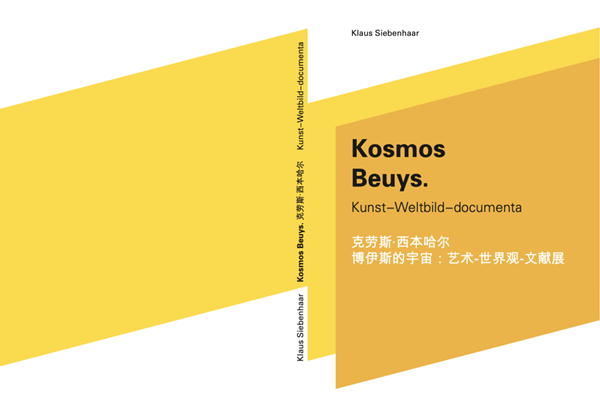
The Beuys Universe: Art - Worldview - Documenta. Series II
Joseph Beuys and the Documenta
Cosmos Beuys: Art, Man, Society, Nature and World
Author: Prof. Dr. Klaus Siebenhaar

Joseph Beuys
For Beuys, art is the universal productive and transformative force. Only art has the potential for “sculptural” creativity, a potential that is given to everyone as a creative force, and each person as a free individual constructs society into a “social sculpture”. In this evolutionary process of change, the concept of art, which has been expanded to include this anthropological and social dimension, proves to be the creative force in man to create a new, nonpartisan, and basically democratic society. Beuys calls this direct democracy based on the ideals of the French Revolution, i.e., liberty, equality and fraternity, a "social organism". Only in this social organism does mankind with the threefold unity of soul, mind and body come to itself again, becomes free and lives in harmony with the whole of nature. This all-encompassing cosmic context explains Beuys' famous sentences and formulas such as "Every man is an artist", "Social sculpture", "Art = Capital".

Beuys' artwork "I like America and America likes Me"
In Beuys' conception of the world and man, spiritual-metaphysical, intellectual-ideal and physical-actional forces combine to form a holistic cosmos. Beuys' anthropological, social and scientific cosmos unites the most diverse "Eurasian" philosophies, religions, mysticisms, social ideas and scientific teachings such as shamanism, Taoism, Christianity, alchemy, modern mysticism, Goethe's scientific writings, romantic art theory and natural science, anarchism, Nietzsche, vitalism, the life reform movement, free enterprise and, above all, Rudolf Steiner's anthropology, which itself draws from these sources.

Beuys' artwork
The diversity of Beuys's references, his often-admired erudition and not least his talent for uniting all these partly contradictory, opposing ideas, theories, philosophies and world views in his very own cosmos make him appear enigmatic, fascinating, ambiguous or eccentric to this day. Like no other artist before or after him, his artistic practice forms a holistic system with actions and his political, social, ecological thinking; one explains itself from the other. Just as his concept of "sculpture" includes all thought, language, feelings, action, everyday work, so consistently does he understand his work, life and achievement as a holistic creative process beyond death. Everything in his life is "exhibition", i.e., creative thinking and acting showing and conveying - it is, in a universal understanding, sculpture, action, conversation, text, energy, force field, spirit, connection with the life-giving nature. Beuys' thinking and acting draws its "directional force", its dynamic of movement from polar fields of tension and states of aggregation: "warm pole - cold pole", flowing - stable, soft - hard, organic - inorganic, soul - body, life - death, word - action. These dualisms correspond with Beuys' specific material aesthetics, his objects and central motifs such as felt, fat, wax, metals, pumps, batteries, transmitters, stones, plants, bees, hare, deer, and coyotes. Beuys' cosmos is thus seen as a kind of power plant that generates its freedom- and life-giving energy in harmony with man, nature and society like an eternal organic cycle. Man is at the centre of this universe, not as the oppressed or the oppressor, but as the "sovereign par excellence in our time".

Beuys' material aesthetics
All transformations therefore start from creative, free, self-determined people who respect nature and wildlife. More than almost any other modernist artist, he trusted in the persuasive power of the word, of language, of discussion, of the "permanent conference" on this path to a better, freer society. Whether as a professor, 100-day discussant at documenta 5, on the street or in both large and small circles - Beuys was an obsessive, emphatic, persistent, and charismatic speaker, with everyone and anyone!

Beuys' artwork "A boxing match in the face of democracy"
In this sense, he saw himself artistically and discursively as a transmitter, mediator and healer - a peaceful but persistent revolutionary of conviction. This is reflected in a multifaceted understanding of his role: shaman, man of pain, herald, redeemer, activist. His mission was to heal a self-destructing humanity and world with the help of his "Expanded Concept of Art", in which everyone is an "artist" in their place and profession. Only once before did a movement believe so radically in the world-changing power of art: German Romanticism with its "poetisation" of the world through literature. Its symbol was the "Blue Flower". Beuys with his felt hat and fisherman's waistcoat became the symbol of an art revolution in which art and life, artist and life were inseparably fused and mutually canceled in Hegel's threefold dictum: preserve, disappear, transport to a higher-order.

博伊斯的理念模型解释
Beuys' conceptual model
